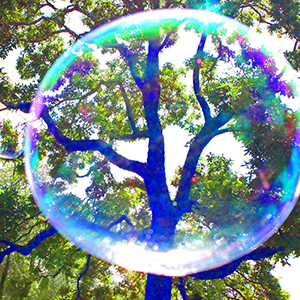
Konstantin Dimopoulos: The Blue Trees
The Cahoon Museum of American Art commissioned artist Konstantin Dimopoulos to create a bold and colorful environmental installation during the spring of 2019. With the help of community volunteers, the artist will colored trees on the Museum’s grounds a vibrant shade of blue. The blue pigment is safe, environmentally friendly, water soluble and washes off easily. Over time, rainfall will return the trees to their natural state.
Konstantin Dimopoulos created The Blue Trees as an on-going environmental art installation to draw attention to global deforestation and the importance of trees to the planet. The artist believes that by changing our familiar landscape, even for a brief amount of time, his work can generate thinking and discussion throughout the community. The Blue Trees installations have occurred in major US cities including Seattle, Denver, Palo Alto, and Houston, and internationally in England, Germany, Australia, Canada, New Zealand, and Singapore.
Click here for more information on Konstantin Dimopoulos
As a vibrant and relevant art museum, part of the Cahoon’s mission is to offer transformative cultural experiences. Working with Konstantin Dimopoulos was a natural fit for the museum’s 2019 community engagement initiative. As part of this initiative, the Museum also sponsored a Blue Tree at the Woods Hole School in Woods Hole, MA which was completed by the artist on May 27 with the help of community volunteers.

These installations allow the community to help create a significant environmental artwork, as well as to participate in a dialogue about the purposes of art and to discuss whether museums should be places of dialogue on issues of global and cultural significance.
Why are the trees blue?
“Because in nature there are no blue trees. It’s the power of color to transform a familiar space into something surreal where people stop and notice the trees” says Dimopoulos. “These blue trees speak for the millions of acres of Old Growth forests and Rainforests that are being removed every year. The blue trees will revert back to their natural state as the blue is a temporary colorant. However, the forests that have been removed have no option of restoration. Nor can their resident ecosystems be brought back to life.”
The Blue Trees began in 2003 when a conservation scientist showed Konstantin Dimopoulos images of the devastation left after the removal of forests in part of Asia. Dimopoulos was asked how to bring such stories from a postscript to headline news. “I knew the answer was to alter reality by transforming urban trees into a voice for the unseen forests and wildlife. I wanted to make the trees visible in a way that made people pause and consider them.”
Sponsors:


Supporters:




